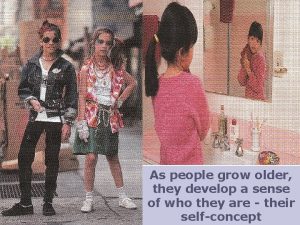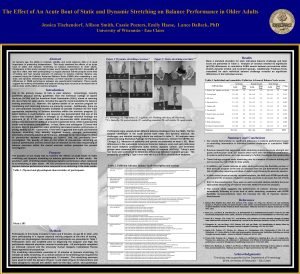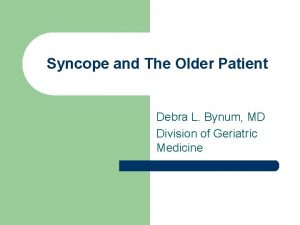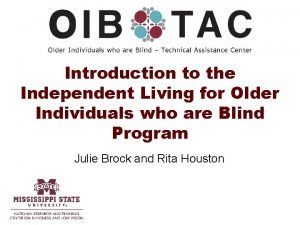Housing for Older People Designing for the next






















- Slides: 22

Housing for Older People Designing for the next generation of housing with care in Kent 20 April 2016 Jeremy Porteus Director Housing LIN

About the Housing LIN • Previously responsible for managing the DH’s £ 227 m Extra Care Housing Fund and £ 80 m Telecare in England grant • 48, 000+ members across housing, health and social services to help improve partnership working and integration on housing and care • Essential online resources on housing with care for older people to support commissioners, funders and providers in market development, innovation and investment • Publish papers to brief on latest innovative policy, research and practice developments in housing, care and support for older people • 10 regional ‘learning labs’ in England & Wales supporting local information exchange, peer-topeer shared learning and improvement activities, and exemplar study visits

Ready for Ageing? • “The housing market is delivering much less specialist housing for older people than is needed. Central and local government, housing associations and house builders need urgently to plan how to ensure that the housing needs of the older population are better addressed and to give as much priority to promoting an adequate market and social housing for older people as is given to housing for younger people. ” Select Committee on Public Service and Demographic Change, Lord Filkin

Housing our ageing population • 90% of older people live in ordinary housing • Nearly 70% are home owners, the remainder are predominantly in social housing • Supported housing for older people accounts for less than 5% of the market (729, 818 units) • 1. 5 m individuals report having a medical condition or disability that requires specially adapted accommodation • Shortfall of supply in specialist housing with care to keep pace with demand, including housing for people with dementia ranges from 164, 000 to 240, 000 by 2032

Shaping communities Co-production • Community-led housing • Self-build housing • Co-operatives • Co-housing • Leasehold schemes for older people • Hub and spoke/community centres Other housing choices for older people • Extra care housing/very sheltered housing • Sheltered/retirement housing/senior living • Retirement Villages • Almshouses • Mainstream housing

Making integration work: building capital • Working with NHS England, ADASS and a consortia of housing industry leads on the role of housing in delivering health and wellbeing in a new Memorandum of Understanding • The shared statement on the health and social care £ 5. 3 b Better Care Fund makes reference to £ 220 m Disabled Facilities Grant and other capital grant funding (£ 135 m) per annum • DH Care and Support Specialised Housing Fund, administered by the HCA and GLA. Phase One saw 122 new schemes in England approved for older and vulnerable people with long term conditions, with Phase Two (£ 155 m) for London and rest of England (2 x Extra Care Housing schemes allocated for Ashford)

Building homes

Dean Hawke’s Circadian House • Longing and belonging – the psychology of ageing • Combatting loneliness and isolation – social care of ageing, friendships and family • Home, place & community – the environment for ageing • • • Live in balance with nature – follow the daily and seasonal cycles of the outdoors Adaptability – adapt to changing conditions ie ‘care ready’ Sensibility – protection from and control of environment ie passive solar gain

Getting the design quality right • Doing it for ourselves/co-design a volunteer ethos- desire and necessity for next generation of older people; resident-led, self-care, mutual ownership, co-housing, ‘virtual’ villages, age-friendly communities • ‘Care ready’ housing more closely integrated housing, care and support commissioned locally to reduce dependency, address long term conditions such as dementia

HAPPI – 10 components of good design quality

Key design characteristics extra care housing Key principles • To provide a ‘Home for Life’ – as far as practically possible. • To create an enabling environment. • To be domestic in style. • To create a building to be proud of. • To enable staff to run and manage the building efficiently and to meet the care and support needs of residents. • To allow individuals to find privacy, comfort, support and companionship. • To create a resource for the local community. • To provide a mix of tenures and a range of care needs (to respond to market changes). • To achieve the required sustainable targets. • To provide for the various staff needs.

Physical environments for extra care housing Brooke Mead Extra Care, Brighton • £ 8. 8 m project, £ 2. 4 m Ca. SSH Fund • 45 apartments, 39 x 1 bed, 6 x 2 bed • Community hub in centre of city with dementia focus

Lifetime neighbourhood and extra care housing Wichelstowe, Swindon • 4, 500 new homes, prototype intergenerational garden suburb • 250 home extra care hub, 75 affordable “HAPPI” homes, • £ 44 m (250 homes), £ 2. 25 m Ca. SSH Fund (75 homes), 20% SO

Dementia and design • Create familiarity - to aid memory, especially recent memory • Learning – to create clear, visible and memorable clues eg colour contrast • Reasoning – avoid confusion eg signage • High levels of stress - design easy to understand, circulate and use space • Difficulty adjusting to the sensory/mobility impairment of normal ageing – consider other means to support wayfinding eg lighting, tactile surfaces • More information and resources at: http: //www. housinglin. org. uk/Topics/browse/Housingand. Dementia/

It’s the people that matter

What’s the evidence?

How to get ready for an ageing society • Understand older customers and potential prospective customers better • Be clear about the implications of ageing for your business plans and capital programmes • Develop service offers promoting personal, social and economic wellbeing • Build strong partnership with the world of healthcare and local councils • In all your housing and regeneration projects, consider how best the housing needs of older people will be met • Involve older people in shaping your design and plans, not just at the start of the project – need a ‘living lab’ approach

Developing age-friendly approaches • Naturally Occurring Retirement Communities – where there already older populations <35% • Lifetime Neighbourhoods – designing built environment • Age Friendly Cities (WHO) – investment in wider infrastructure • “That Government should make specific provision in the National Planning Policy Framework on planning for an ageing society, to facilitate the supply of sufficient housing for older people to meet the demands of an ageing population and overcome barriers to moving” (APPG) • Strategic Housing for Older People: planning, designing and delivering housing that older people want

Useful Housing LIN resources • Housing LIN Factsheet 6, Design principles for extra care • CIH/Housing LIN briefing: New approaches to delivering better housing for older people • Housing LIN viewpoints: Breaking new ground: A quest for dementia friendly environments

Useful web resources Housing LIN dedicated webpage: • Design ‘hub’ with content on: Accessible design; HAPPI; Designing extra care housing; age-friendly communities; eco-housing; planning and inclusive design • www. housinglin. org. uk/Topics/browse/Design_building/


Thank you c/o EAC 3 rd Floor, 89 Albert Embankment London SE 1 7 TP email: info@housinglin. org. uk tel: 020 7820 8077 website: www. housinglin. org. uk Twitter: @Housing. LIN
 Life is older older than the trees
Life is older older than the trees X.next = x.next.next
X.next = x.next.next As people grow older
As people grow older Altered cognition in older adults is commonly attributed to
Altered cognition in older adults is commonly attributed to Dynamic stretching for older adults
Dynamic stretching for older adults Hoa/received/letter/her friend nien/today
Hoa/received/letter/her friend nien/today Syncope in the older patient is
Syncope in the older patient is Downsizing and divesting older business
Downsizing and divesting older business Superlativo de blanca
Superlativo de blanca Intellectual development in later adulthood
Intellectual development in later adulthood Adjectives for younger sister
Adjectives for younger sister Module 11 studying the brain
Module 11 studying the brain Juan continued playing although he injured his knee
Juan continued playing although he injured his knee The breadwinner parvana character traits
The breadwinner parvana character traits Synformal anticline
Synformal anticline Covids older adults
Covids older adults Sos spelling for older students
Sos spelling for older students The virtues of growing older
The virtues of growing older Older individuals who are blind program
Older individuals who are blind program Wild swans at coole date
Wild swans at coole date Older adults
Older adults Web accessibility for older users
Web accessibility for older users Nipołomice
Nipołomice











































